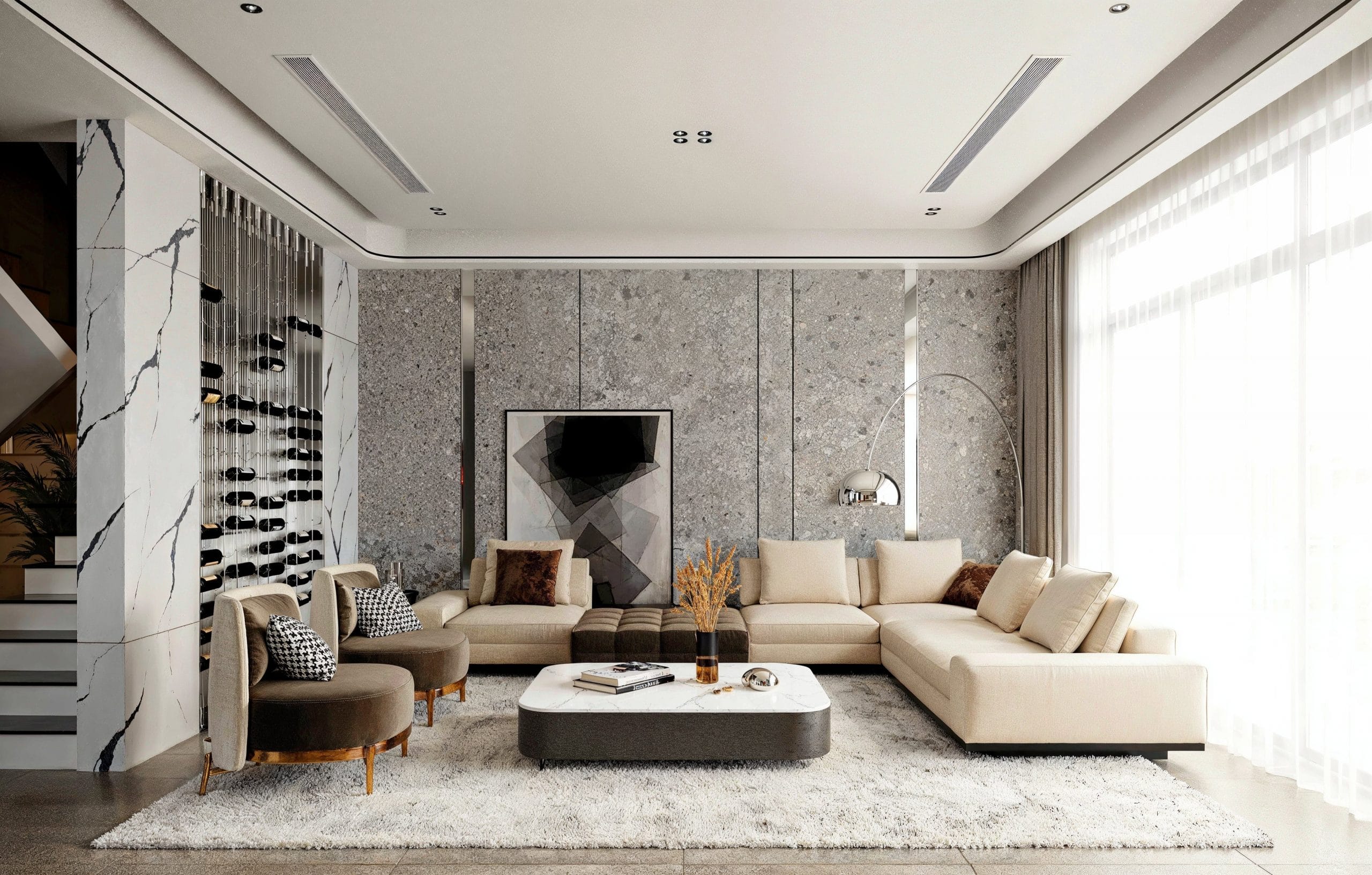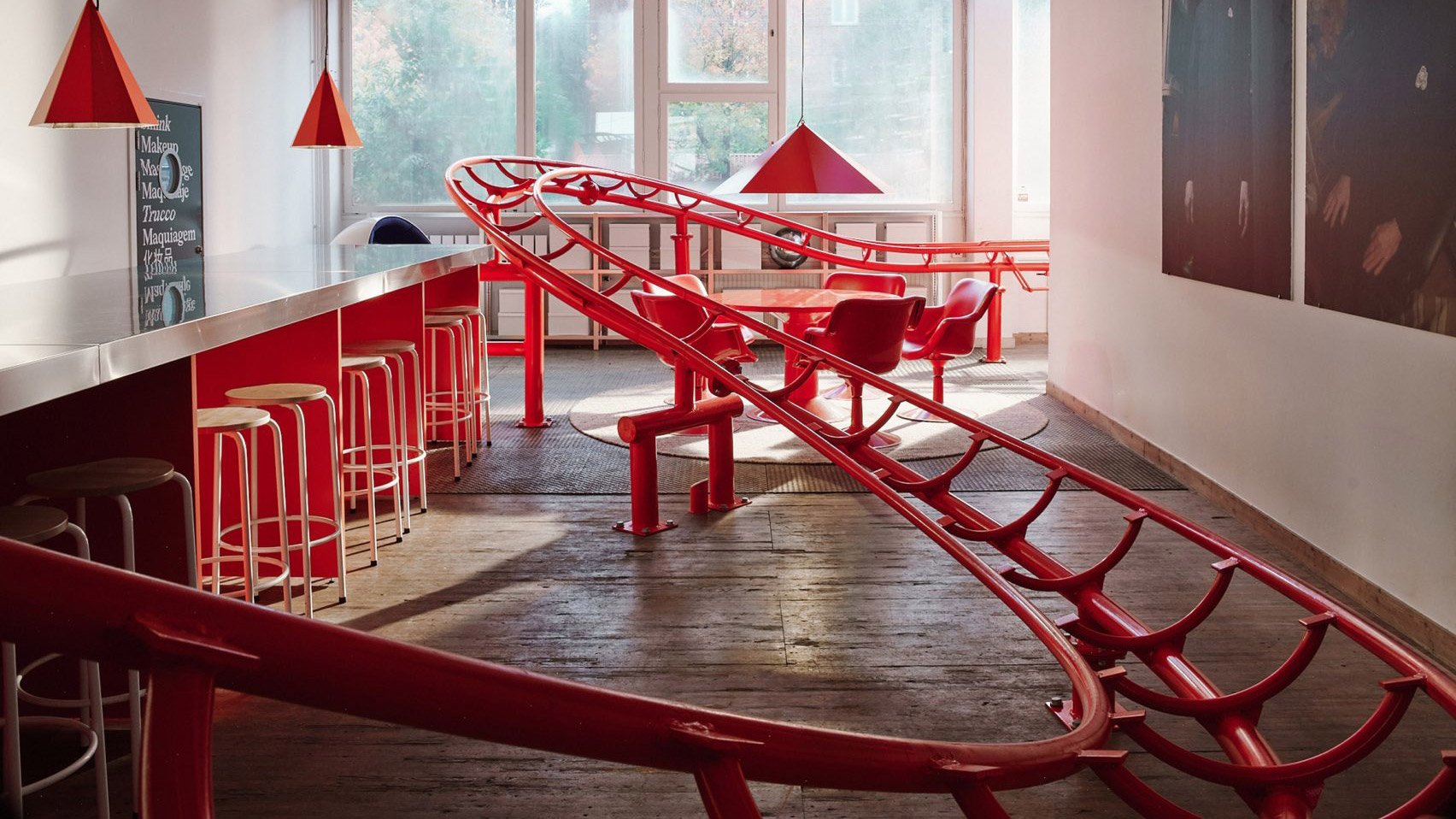Designing your living room can be very stressful. There are plenty of mistakes you can make even when giving careful consideration to the various aspects of your living room, such as how to choose the right sofa, deciding on the layout of your living room, or even where you should place your TV.
To help you with all of this, I’ve compiled a list that offers tips for avoiding and fixing the most common mistakes people make when designing their living rooms.
Feel free to pick and choose which tips to read based on issues you think might be relevant to you in case my list wasn’t complete enough for you or didn’t officially provide an answer for your issue.
One of the most important parts of a house is the living room, so it’s a space that has to be designed with some careful consideration and preparation.
Any slip-ups in designing your living room can put off potential visitors or leave you feeling less than satisfied.
However, with these handy tips, designing your living room can be an enjoyable and stress-free experience.
Tip #1 – Plan your layout.
When designing a space like the living room, it’s easy to get caught up thinking about color schemes and furniture before you’ve even thought about the layout of the room.
But figuring out your layout first will help you make smart choices in terms of what to buy and how to design the rest of it.
A great way to start planning your layout is by using painter’s tape. You can mark on your floor where each piece of furniture will go, which will give you a sense of whether the space is working or not.
It’s important to consider the function of that particular room when designing your layout.
For example, if you want your living room to be a place for entertaining guests and having big parties, an open floor plan works best since it allows for more movement and engagement.
If you’re looking for something cozier, with more privacy, divide up your space with furniture or area rugs—it’s a trick that makes even the smallest spaces seem cozy and intimate.
Tip #2 – Measure your furniture.
Once you’ve decided on how your space will function, measure everything—twice!
It’s important that you know the exact measurements of each piece of furniture so that when you do go to buy them, you’ll know exactly what fits into your space.
Just as you would do when designing any other room, you must measure the size of your furniture when you are planning a layout for your living room.
You want to be sure that there is enough space between your furniture pieces to move around comfortably, and that the couch isn’t too close to the TV stand or fireplace if there is one.
If you’re working with a small space, this is especially important—you don’t want to have too many large pieces in one room, because then it will appear crowded and uncomfortable, even if there’s technically enough space for people to sit on the couch and watch TV with ease.
Having the right amount of space between each piece of furniture will help ensure that the room feels cozy and inviting to anyone who comes in.
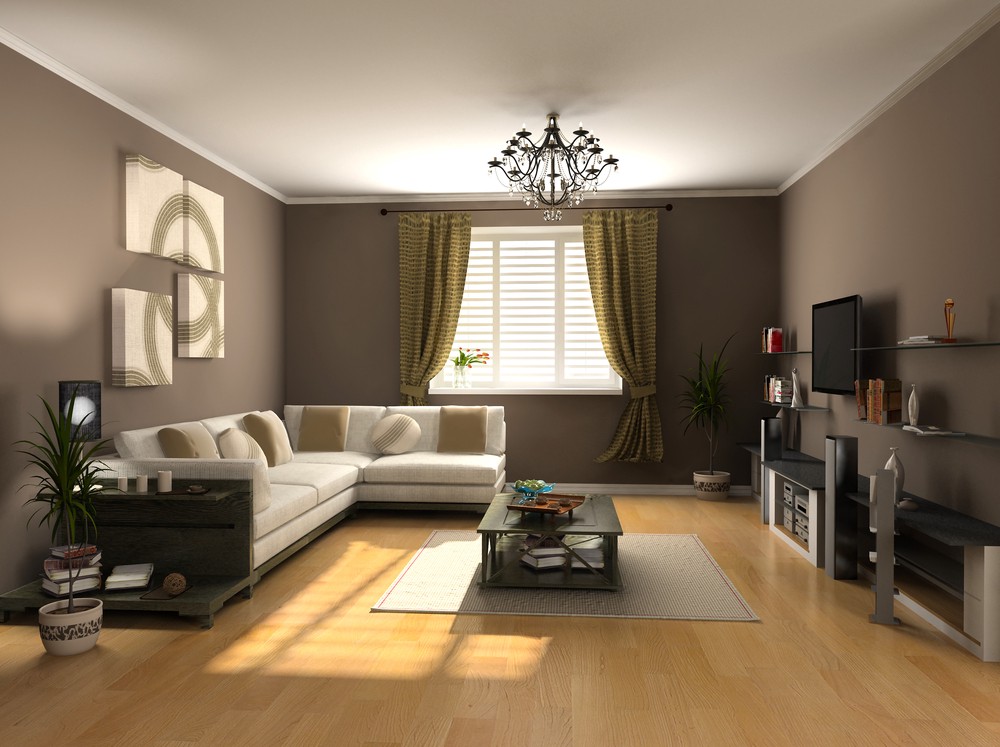
Tip #3 – Choosing the right fabric.
Fabric is a powerful tool for designing your living room. You can use it to bring color and pattern into the space, as well as texture. When choosing fabric, you want to be sure that it works with the rest of your decor and complements other elements in the room.
First, you want to choose a color scheme. A well-designed living room will have several great color combinations, from the drapes to the throw pillows to the upholstery of the furniture.
If you are going for a classic look, you probably want to stick with neutral tones like beige, grey, and black. For a more modern taste, then you might go for bolder colors such as red or orange.
However, if you are not sure what color scheme would work best in your living room, then it is best to consult with an interior designer who can help you decide which fabrics would be most appropriate for your needs.
Make sure that the fabric can be maintained properly. If you don’t know how to wash certain fabrics it’d be best to find laundry services for that.
It’s also important that they know how much time and effort they will need to put into the project so they can plan accordingly.
In addition to choosing the right color scheme, you also need to make sure that your fabrics are durable enough for regular use in a high-traffic area such as your living room.
Tip #4 – Experiment with the layout.
When designing your living room, experiment with the layout before you make any major purchases.
If you don’t know where to begin, finding the main focal point can be a great place to start. Common focal points in living rooms are fireplaces or television sets.
But if there is no fireplace or TV set in your living room, try bringing in a large piece of art that will command attention and set a mood for the rest of the room.
Once you’ve decided on a focal point, arrange to seat around it. You can use two large sofas facing each other to create an intimate conversation area or place your sofa against the wall if you want more space to walk around it.
Try adding ottomans that move easily throughout the room if your space is small and short on seating so that people can sit or put their feet up. For an extra cozy look, try an upholstered ottoman instead of a wooden one.
Tip #5 – Mix and match.
When it comes to designing your living room, you can go with a traditional style or opt for a more modern look.
You can also go with a specific theme or color scheme. But the best way to put together a living room is to mix and match. Mixing styles and themes allow you to create a unique living space that reflects your personality.
Start by mixing different styles of furniture. For example, you can use traditional wooden furniture, as well as modern pieces that are made from metal or plastic. You can also get creative by using different types of fabrics to upholster your furniture.
If you have an existing sofa, you can add accent pieces, such as throw pillows, to give it a new look. Another option is to mix furniture that has been handed down in your family with newer items you have purchased on your own.
With fabrics, you can use patterns of different colors and textures in the same room.
For example, you may want to use two different patterns on one chair and another pattern for throw pillows and other accessories in the room.
This will add visual interest, but it will also show off your personality as well as your ability to coordinate colors and patterns in your home decorating efforts.
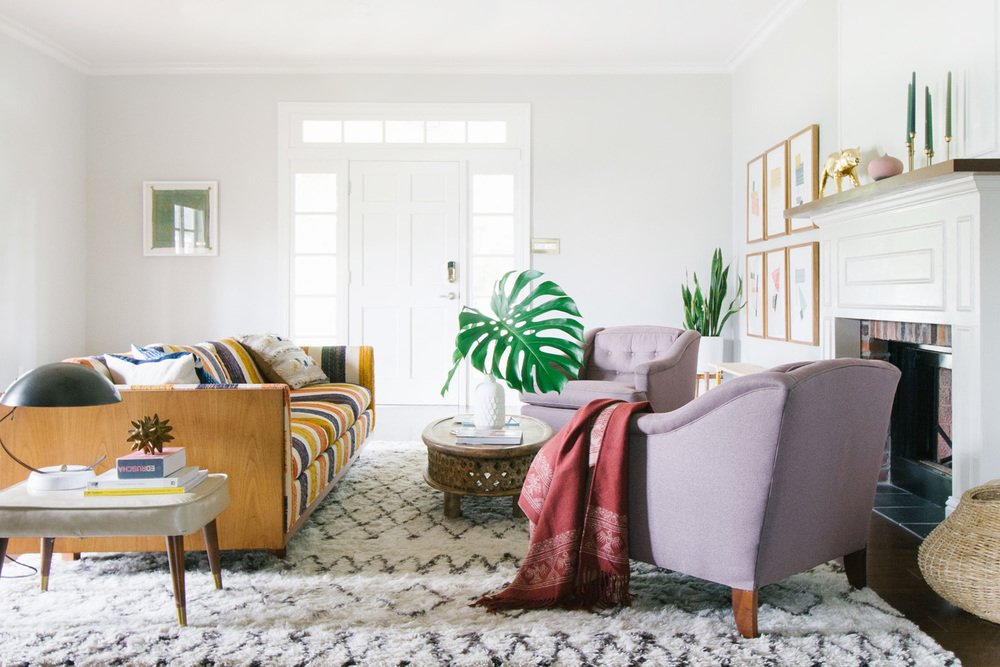
Tip #6 – Lighting is key.
Lighting is key when designing your living room. Try using a combination of lamps and overhead floor lamps, as well as recessed lighting to create the right balance in your living room.
The lighting you choose will set the tone for the rest of your living room decor, so be sure to choose wisely.
If you’re looking for something edgier, try hanging a chandelier or pendant lamp from the ceiling. These types of lamps work well in modern or contemporary-style homes, as they are often made from metal or glass that can complement other furniture designs.
To make your living room look more inviting, try using dimmer switches on all lights, including those on the ceiling fan. This will allow you to adjust the brightness level in each area of your home depending on what you are trying to accomplish at any given time.
A common mistake people make when lighting their living rooms is putting all their lights on one wall; however, this will only leave one area of your room dark and unattractive.
Instead, it’s best to use a combination of lamps and overhead floor lamps in order to create an inviting atmosphere throughout your entire house.
Tip #7 – Utilize valuable wall space.
Valuable wall space is a precious commodity in any home. And in the living room, it’s even more important to make sure that space is used as efficiently as possible.
After all, this is the room where you spend most of your time, so it should be designed to serve a variety of purposes.
A great way to use your wall space efficiently is with shelving and storage units. Besides being extremely functional, they can help create the visual appeal that makes a living room special.
When buying these types of items, look for ones that fit in with your overall design plan. If you want a modern look, for instance, try to find shelves made out of sleek materials like stainless steel or glass.
If you’re going for an industrial look, choose shelves made from exposed brick or concrete blocks.
Be creative with how you arrange your storage units—don’t just line them up against the walls!
Instead, try arranging them in a way that creates open areas within the room where people can gather and interact. This will increase the flow of energy through your living room and make it seem more inviting to visitors and family members alike.
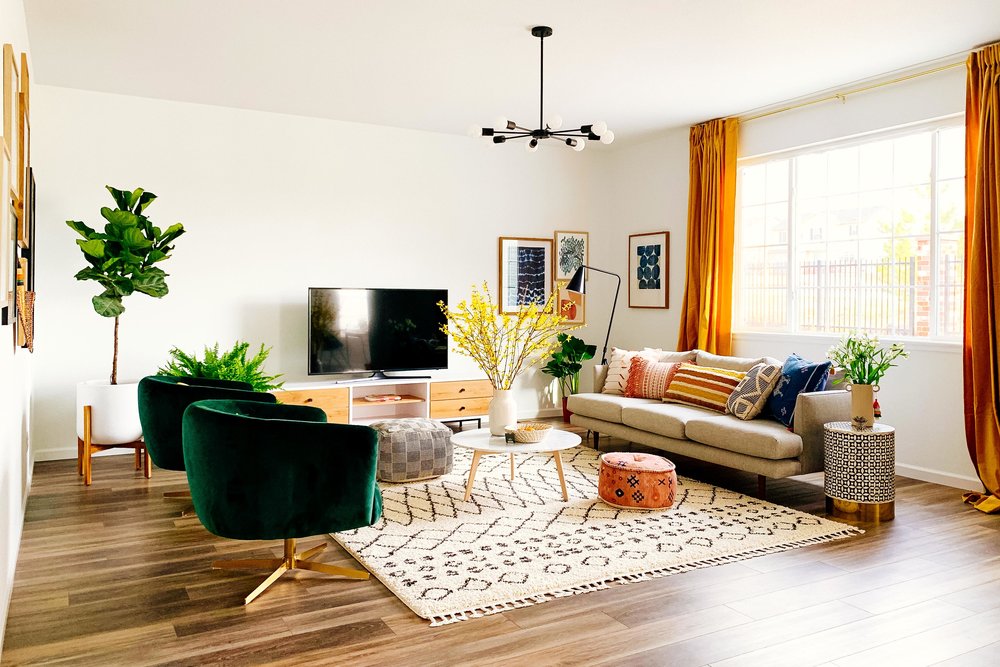
Tip #8 – Add in some nature.
The simplest way to bring nature into your living room is to add a plant or two. Houseplants have become popular home accents in recent years, and they’re a wonderful way to bring a pop of color and some life into a bare room.
Plants can be added onto just about any surface—shelves, window sills, coffee tables, mantels—and they can also be hung from the ceiling or tucked into corners.
You don’t need a green thumb to keep a plant alive, either; while some varieties require more attention than others (and some are more likely to burn than others), there are plenty of low-maintenance options out there that can thrive even under the care of a novice gardener.
If you want to go the extra mile and really make your living room feel like an extension of the outdoors, consider incorporating florals, too.
A beautiful arrangement of flowers adds color and fragrance—not to mention it’s an excellent chance for you to practice your arranging skills!
The Final Verdict
Living rooms are the go-to room for entertaining and relaxation. They’re where people host guests, watch their favorite shows, and lounge around comfortably. The design of your living room can set the tone for your home.
I hope this guide will help you make some informed decisions as to how to design your living room.
Remember that the tips I’ve outlined here apply to virtually all rooms in your house. As a result, you should be able to easily apply these living room design tips to any other space you’re working on in the future.



